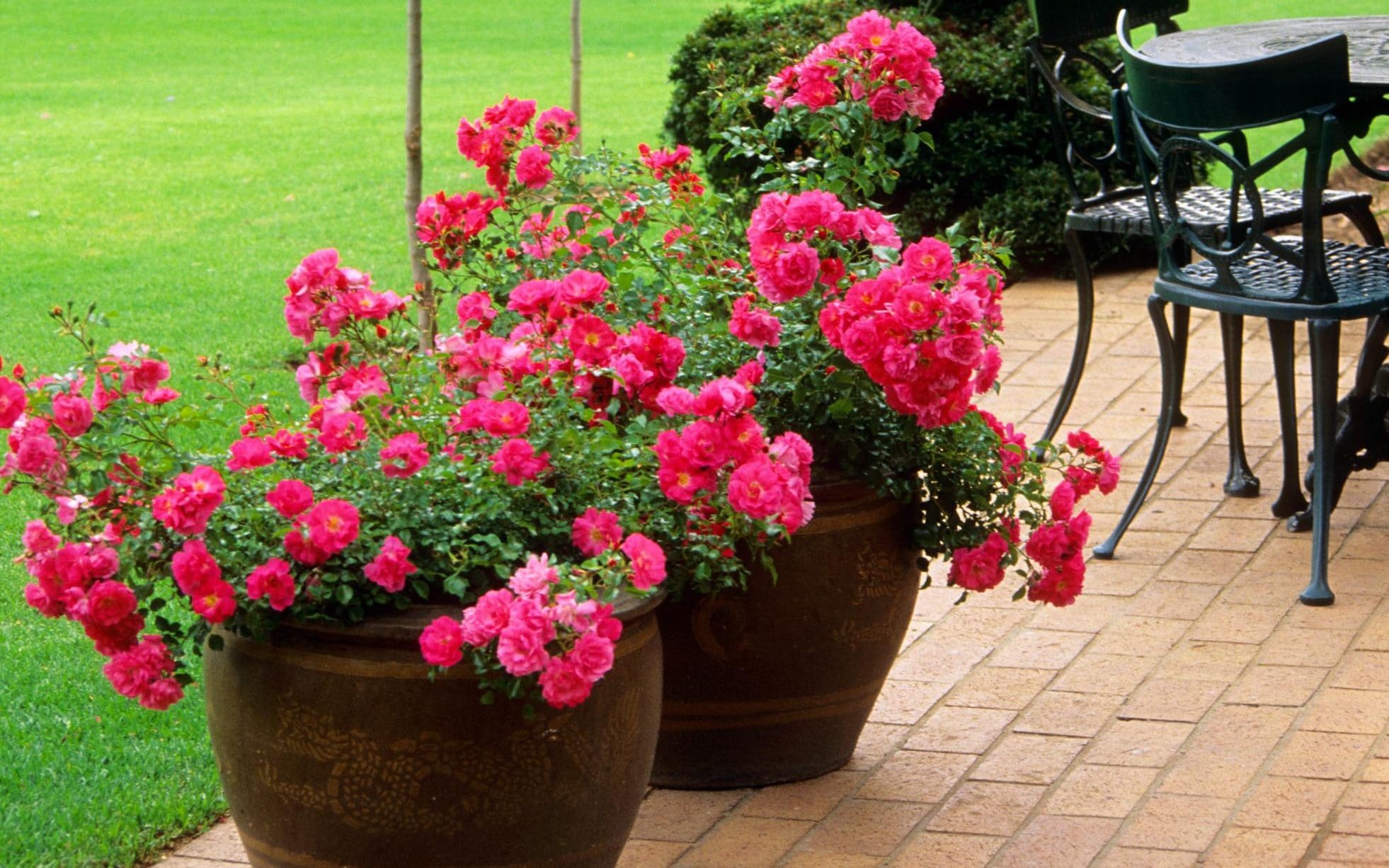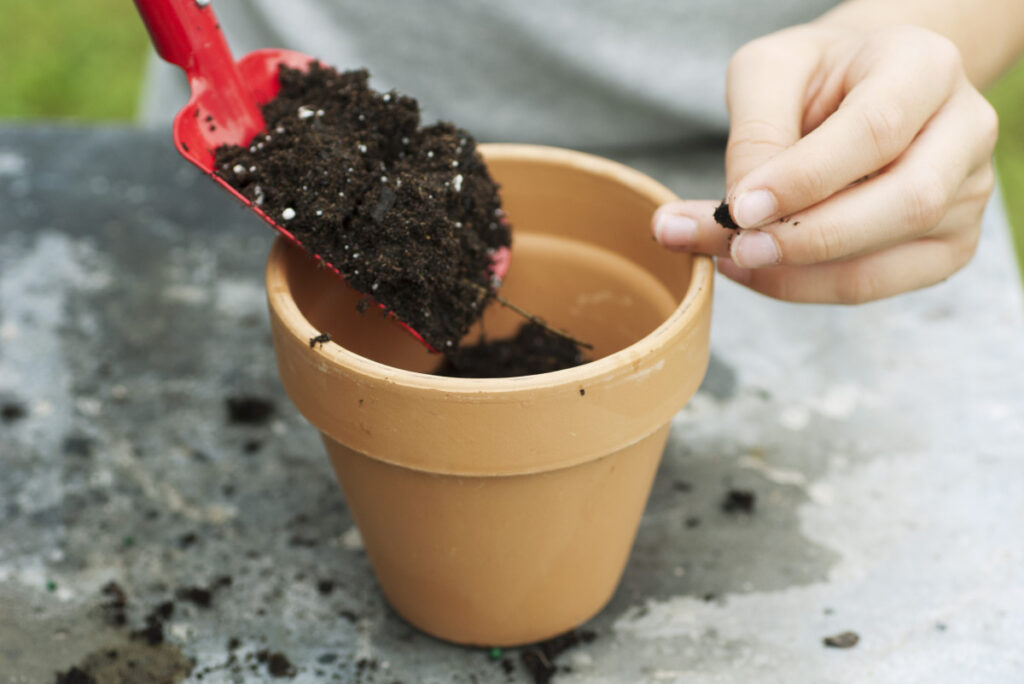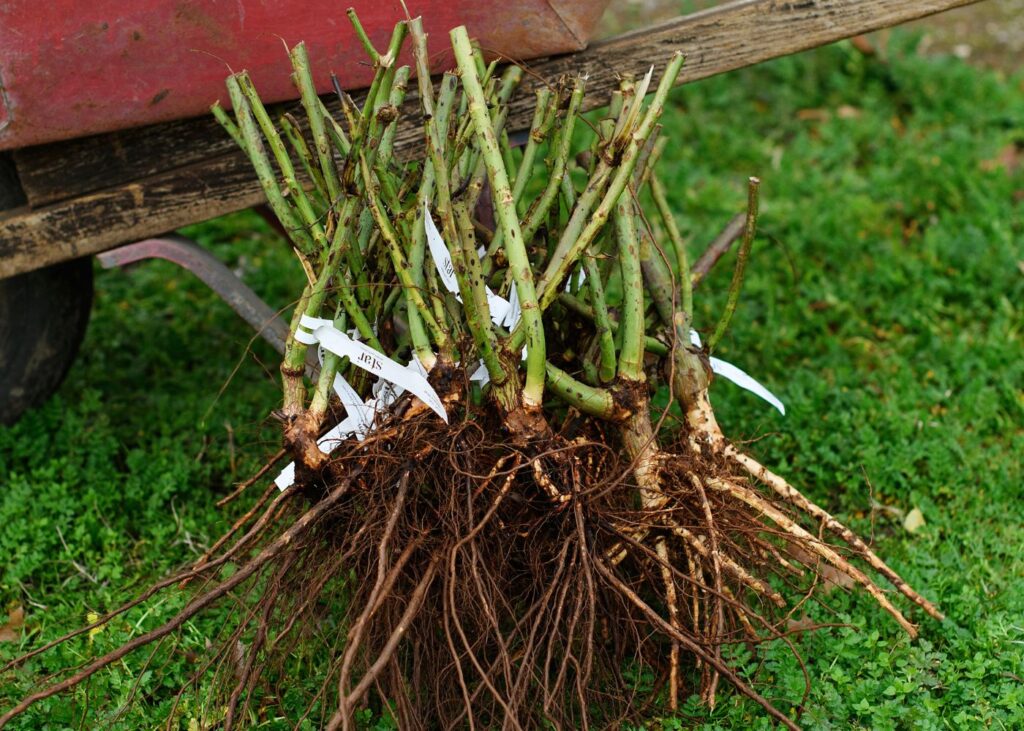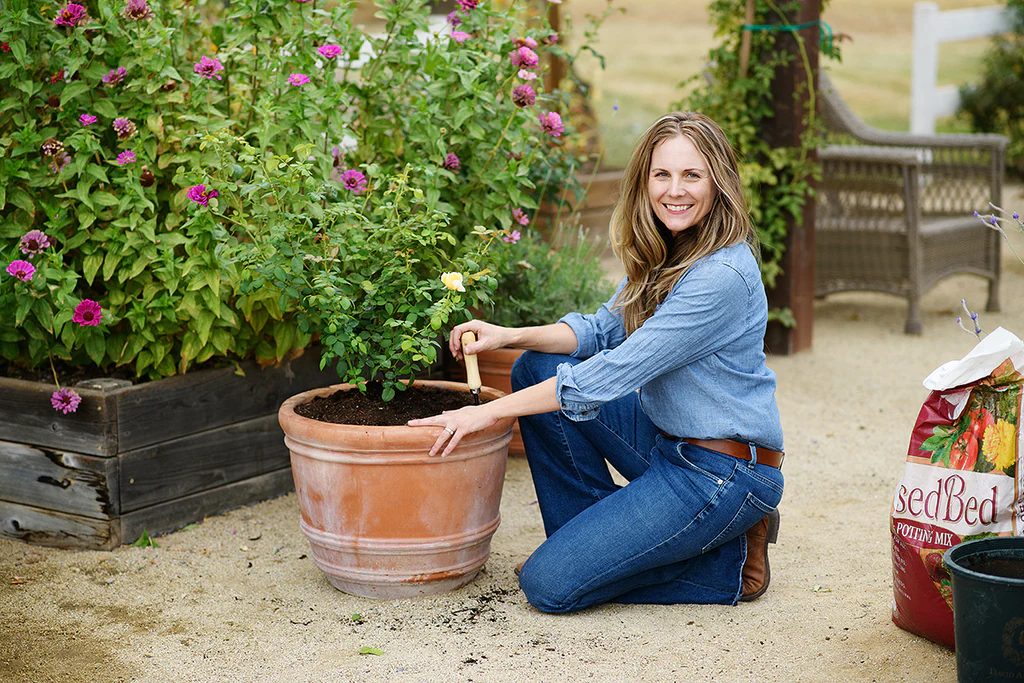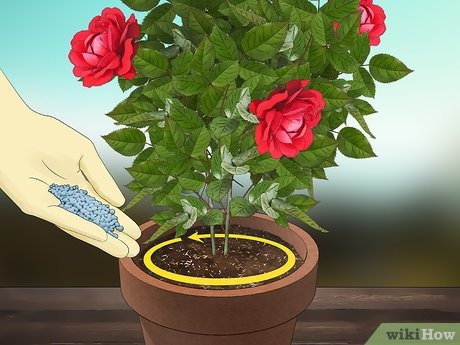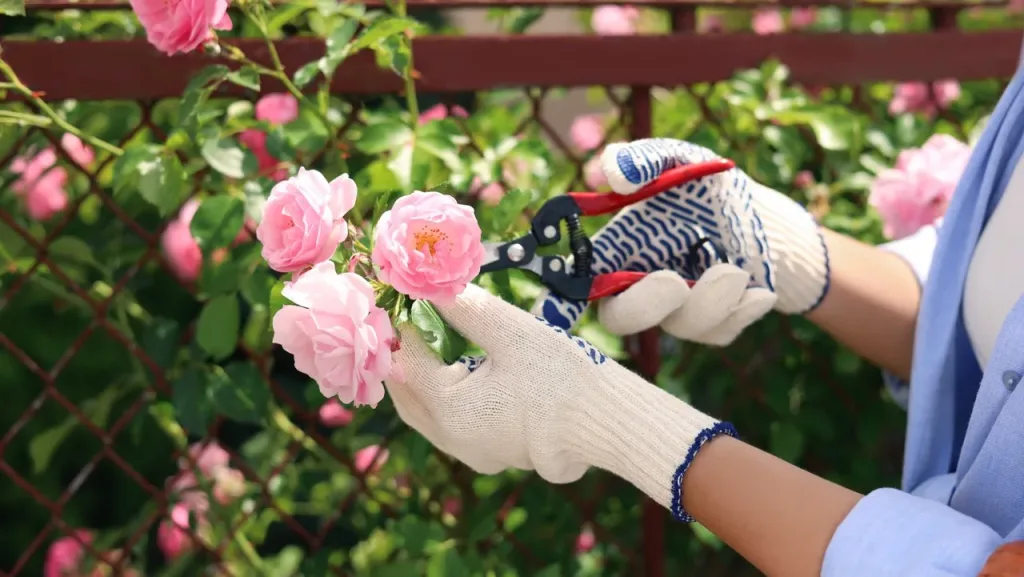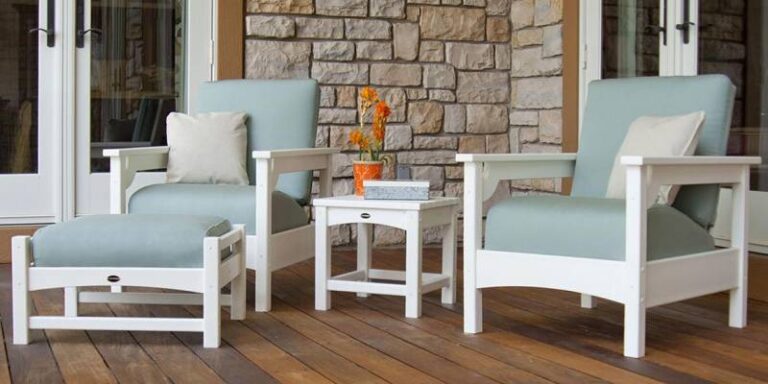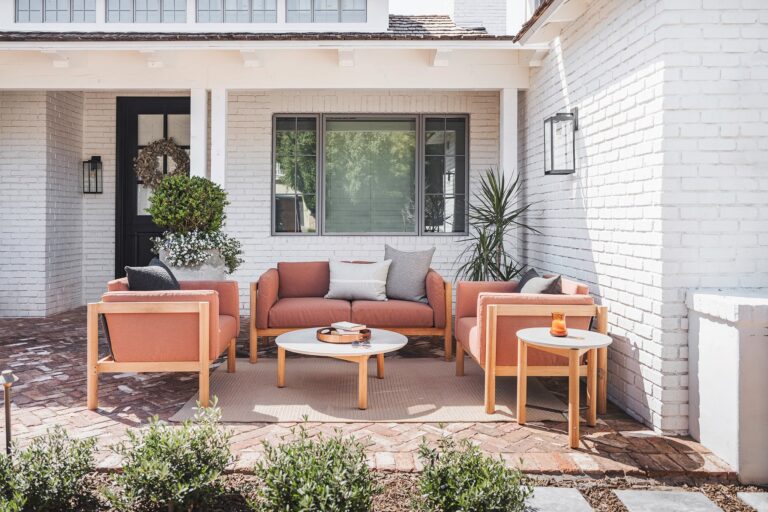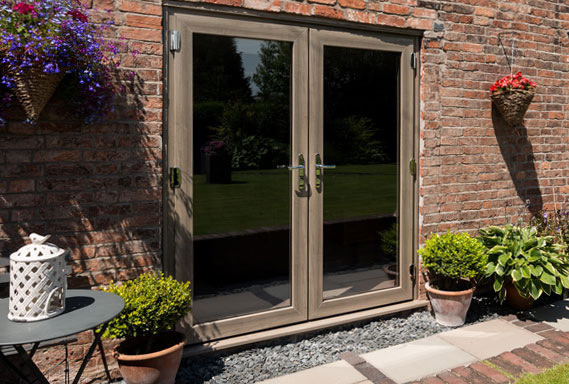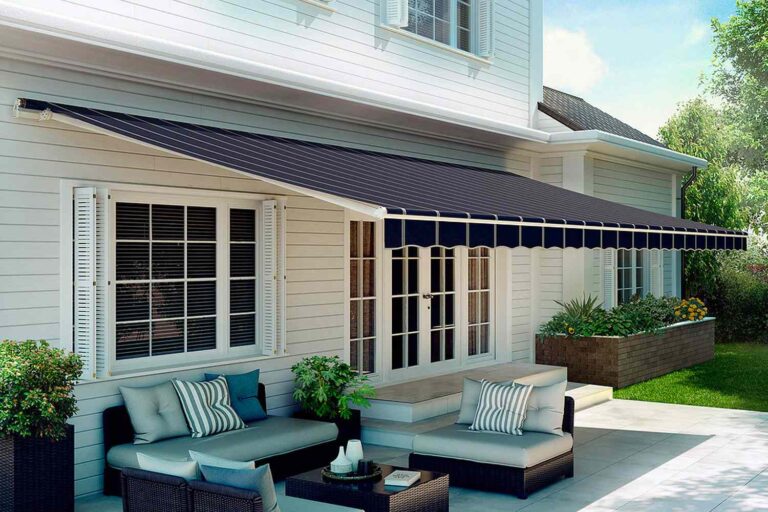How to Grow Gorgeous Roses for Patio Containers
Roses are among the most beautiful and fragrant flowers you can grow in your garden. But what if you don’t have a lot of space, or you want to enjoy roses closer to your home? The solution is simple: grow roses in patio containers!
Growing roses for patio containers is not only possible but also rewarding and fun. You can create stunning displays of color and scent on your patio, deck, balcony, or porch.
You can also move your roses around to suit your needs and preferences. And you can protect your roses from harsh weather and pests more easily.

Credits to Ludwig’s Roses
You will find out how to choose the right roses, containers, and locations for your roses. You will also learn how to plant and care for your roses and how to enjoy their beauty and fragrance all season long.
Choosing the Right Roses for Patio Containers
Not all roses are suitable for growing in containers. Some roses are too large, too vigorous, or too prone to diseases. You want to choose roses that are compact, disease-resistant, and adaptable to different conditions. Here are some tips to help you choose the right roses for containers:
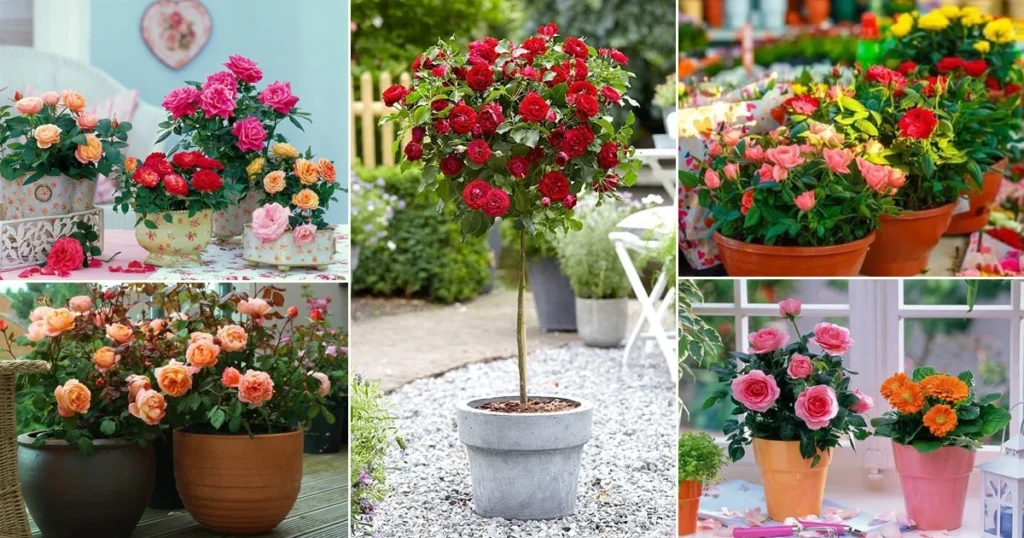
- Look for roses that are labeled as “patio roses,” “miniature roses,” or “dwarf roses.” These roses are bred to be smaller and more manageable than regular roses. They usually grow between 1 and 3 feet tall and wide and produce clusters of small but colorful flowers.
- Consider the color, fragrance, and shape of the roses. You want to choose roses that match your personal preference and complement your patio decor. You can also mix and match different roses to create a stunning display of contrast and harmony. For example, you can pair red roses with white roses or yellow roses with purple roses. You can also choose roses that have a strong or subtle fragrance, depending on your taste. And you can choose roses that have different shapes, such as single, double, or cupped petals.
- Check the hardiness and disease resistance of the roses. You want to choose roses that can survive the winter in your area and that are resistant to common diseases such as black spots, powdery mildew, and rust. You can find this information on the plant tags or online catalogs of the roses. You can also look for roses that have the “All-America Rose Selections” (AARS) award, which means they have been tested and proven to be high-quality and reliable.
Choosing the Right Containers for Roses
The containers you choose for your roses are also important for their health and beauty. You want to choose containers that are large enough, well-drained, and attractive. Here are some tips to help you choose the right containers for roses:
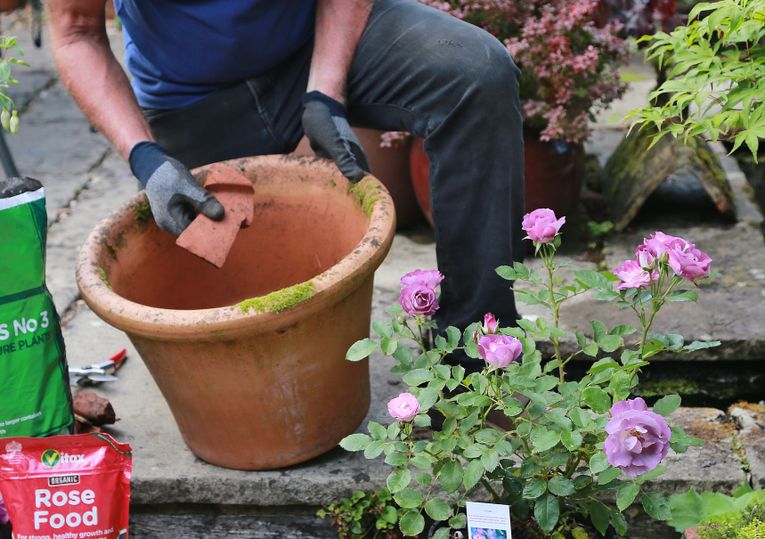
- Choose containers that are at least 12 inches in diameter and 12 inches in depth. This will allow enough room for the roots and the soil to grow and retain moisture. You can use larger containers if you want to grow more than one rose in the same pot or if you want to add some companion plants such as herbs, annuals, or perennials.
- Choose containers that have drainage holes at the bottom. This will prevent waterlogging and root rot, which can kill your roses. You can also place a layer of gravel, pebbles, or broken pottery at the bottom of the containers to improve drainage. You can also use saucers or trays under the containers to catch the excess water and protect your patio surface.
- Choose containers that are made of durable and weather-resistant materials. You can use containers that are made of plastic, metal, wood, ceramic, or clay. Plastic containers are lightweight, inexpensive, and easy to move around. Metal containers are sturdy, stylish, and can retain heat. Wood containers are naturally rustic and can insulate the roots. Ceramic and clay containers are heavy, decorative, and can keep the soil cool.
Choosing the Right Location for Roses
The location you choose for your roses is also crucial for their growth and flowering. You want to choose a location that has enough sun, air, and water. Here are some tips to help you choose the right location for roses:
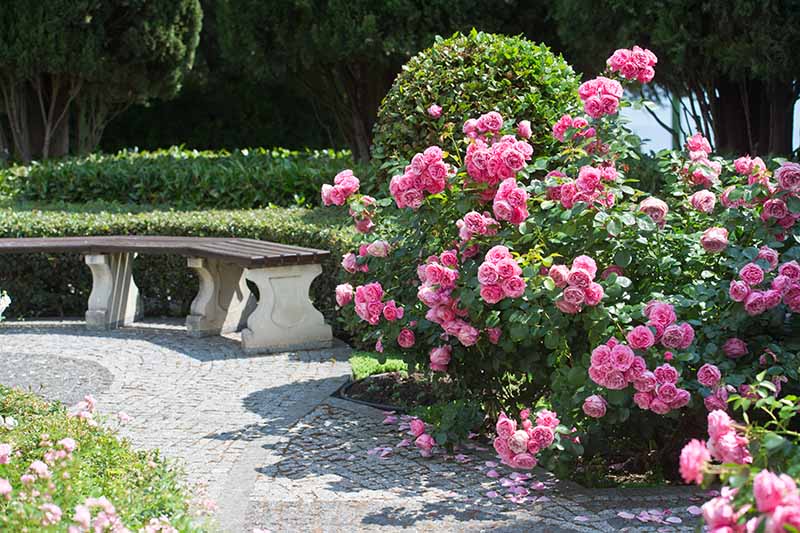
- Choose a location that receives at least six hours of direct sun per day. Roses need the sun to produce healthy foliage and abundant blooms. If your patio is shaded, you can move your containers to a sunnier spot or use a rolling cart, or a plant stand with wheels. You can also prune any overhanging branches or vines that block the sun.
- Choose a location that has good air circulation. Roses need air to prevent fungal diseases and pests. If your patio is crowded, you can space your containers at least 2 feet apart or arrange them in a staggered pattern. You can also prune any dead or diseased leaves and stems to improve airflow.
- Choose a location that has access to water. Roses need water to stay hydrated and healthy. If your patio is far from a water source, you can use a hose, a watering can, or a drip irrigation system to water your roses. You can also mulch your containers with organic materials such as bark, straw, or compost to conserve moisture and prevent weeds.
Planting and Caring for Roses in Containers
Once you have chosen the right roses, containers, and location for your patio roses, you are ready to plant and care for them. Here are some steps to follow:
- Fill your containers with a mixture of potting soil and well-rotted manure, leaving some space at the top for watering. You can also add some organic fertilizer or compost to enrich the soil.
- Remove your roses from their nursery pots and gently loosen their roots. Place them in the center of the containers and spread their roots evenly. Make sure the bud union is slightly below the soil level.
- Backfill the containers with more soil and firm it gently around the roots. Water thoroughly and let the excess water drain out.
- Place your containers in their final location and make sure they receive enough sun, air, and water. Water your roses regularly, especially in hot and dry weather. Check the soil moisture by inserting your finger an inch deep. If it feels dry, water your roses until the water runs out of the drainage holes. Avoid wetting the foliage to prevent fungal diseases.
- Fertilize your roses every two weeks during the growing season with a balanced liquid rose fertilizer. Follow the directions on the product label and water well after fertilizing. Stop fertilizing about six weeks before the first frost in your area.
- Prune your roses in early spring before they start to leaf out. Remove any dead, diseased, or damaged stems, and cut back any weak or spindly growth. Shape your roses to maintain their size and form, and encourage new growth and blooms. Use sharp and clean pruning tools and make clean cuts at a 45-degree angle, just above an outward-facing bud.
- Protect your roses from pests and diseases by inspecting them regularly and removing any affected parts. You can also use organic or chemical controls, such as insecticidal soap, neem oil, or fungicide, to treat any problems. Follow the directions on the product label and apply only when needed. You can also prevent pests and diseases by choosing resistant varieties, providing good air circulation, and practicing good hygiene.
Enjoying Your Roses in Patio Containers
Growing roses in patio containers is a rewarding and enjoyable hobby that will brighten up your outdoor space. Here are some tips to help you enjoy your roses even more:
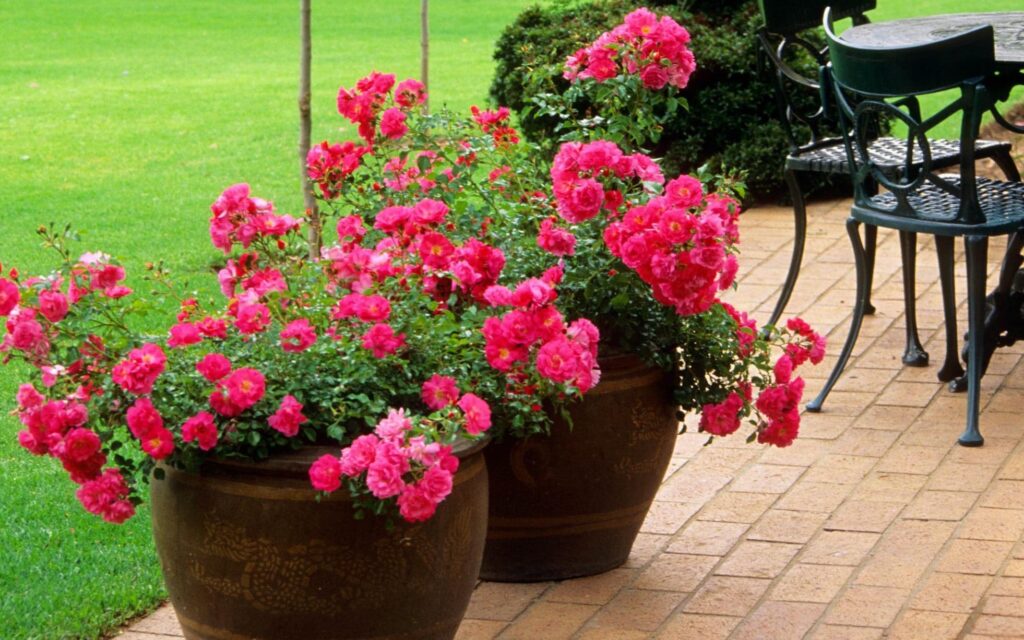
- Deadhead your roses regularly to keep them blooming and tidy. Deadheading is the process of removing the spent flowers to prevent them from forming seeds. This will encourage your roses to produce more flowers and extend their blooming season. To deadhead your roses, simply cut off the faded flowers at the base of their stems or just above the first set of healthy leaves.
- Harvest your roses for bouquets and arrangements. You can cut your roses anytime they are in bloom, but the best time is in the morning when they are fully hydrated. Choose roses that are just opening or about to open, and avoid roses that are fully open or fading. Cut your roses at a 45-degree angle, just above an outward-facing bud, and place them in a bucket of water. Remove any leaves or thorns that will be below the water level in the vase. Arrange your roses in a clean vase with fresh water and some floral preservatives. Change the water every few days and trim the stems slightly to prolong their vase life.
- Enjoy the fragrance and beauty of your roses. You can place your containers near your patio door, window, or seating area, where you can see and smell your roses easily. You can also move your containers around to create different effects and moods. For example, you can group your containers by color, contrast, or theme, or you can create a focal point with a large or striking container. You can also mix your roses with other plants, such as herbs, annuals, or perennials, to add more interest and variety.
Final Analysis
Growing roses for patio containers is a fun and easy way to enjoy these lovely flowers in your garden. You can choose from a wide range of roses that are suitable for containers and create stunning displays of color and scent on your patio, deck, or balcony. You can also plant and care for your roses with some simple steps and enjoy their beauty and fragrance all season long. Growing roses in containers is also a great way to save space, move your roses around, and protect them from harsh weather and pests. With these tips and tricks, you can grow gorgeous roses in patio containers and make your outdoor space more inviting and attractive.
Jl.Surjan
Disclosure: Our blog contains affiliate links to products. We may receive a commission for purchases made through these links. However, this does not impact our reviews and comparisons. We try our best to keep things fair and balanced, in order to help you make the best choice for you.
